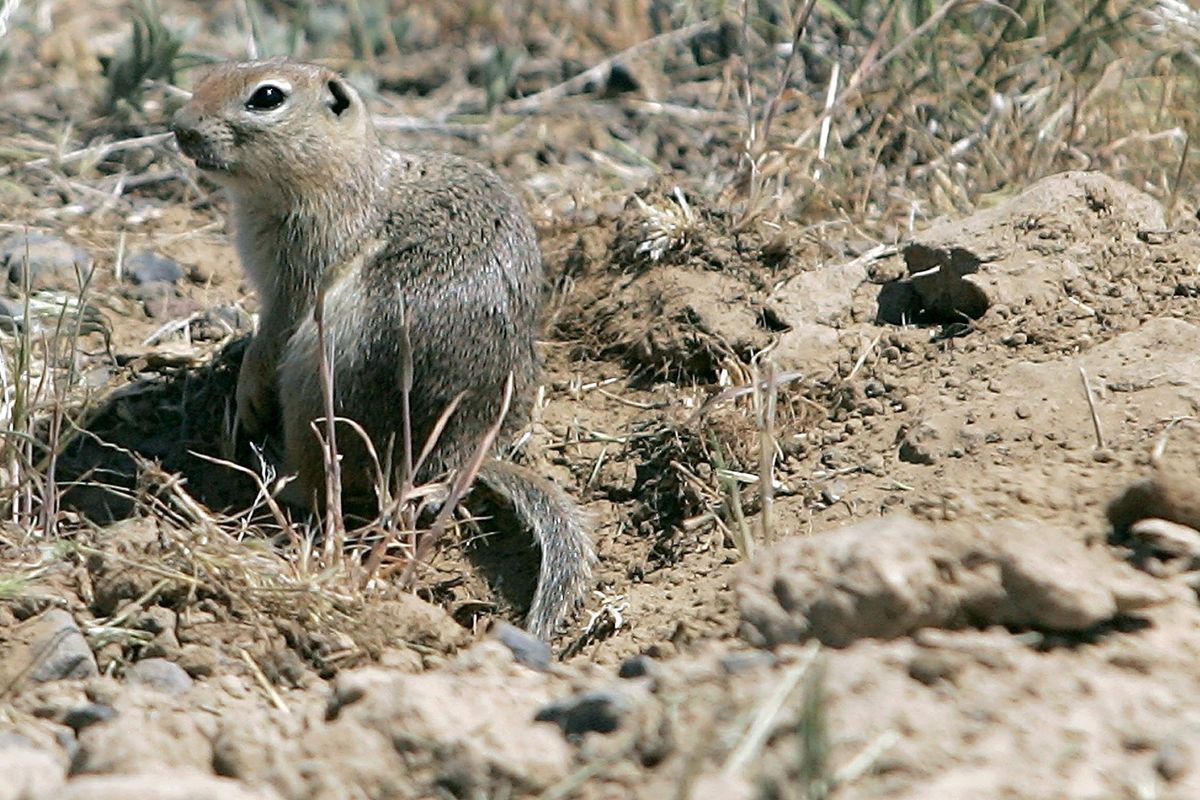State hopes to buy historic ranch for conservation

BENTON COUNTY, Wash. – Rattlesnake Mountain offers sweeping views of the historic McWhorter Ranch, a pristine property largely unchanged since it was settled in 1903, laced with dry grasses and sagebrush and home to elk and other wildlife. The ranch stretches down the mountain’s south face across more than 20 square miles of Washington’s shrinking shrub-steppe habitat.
In the not-so-far-off distance, another scene unfolds: The bustle of the nation’s fastest-growing metropolitan area, complete with high-tech businesses and newly-planted vineyards to support a booming wine industry.
McWhorter Ranch is going up for sale June 1, and given its size and location, the property could very likely draw bids from agricultural and real estate developers. But state and local officials are working with conservation groups to try to raise enough money to stave off any speculators and preserve it.
“There aren’t many of these big ranches left. It’s a rarity and it’s precious,” said Jeff Tayer, regional director for the Washington Department of Fish and Wildlife. “As rare as this is now and as precious as it is now, it’s nothing compared to how rare it will be 20 years from now.”
Lucullus Virgil McWhorter traveled west from Ohio to settle a sprawling stretch of land in arid south-central Washington in 1903, raising sheep, cattle and children. He developed relationships with the Native American tribes in the area, studied their culture and helped them defend their land and water rights.
Generations of McWhorters grew up on the ranch that has become a shining example of conservation farming practices.
“It’s amazing to look around and see not only the beauty but how’s it been preserved,” said Max Benitz, a former Benton County commissioner and longtime family friend who’s serving as property caretaker. “It’s just a real opportunity for perspective.”
Adding to that perspective is that during World War II the federal government condemned some of McWhorter’s land – along with the land of many others – for a top-secret project to build the atomic bomb. In the process, the Hanford Nuclear Reservation was born, spawning a nuclear industry that produced plutonium for the nation’s weapons arsenal for decades.
Industry and jobs have boosted the region’s population beyond 260,000, and the U.S. Census Bureau earlier this year tagged it as the nation’s fastest-growing metro area since 2010.
All that growth doesn’t bode well for Washington’s shrub-steppe habitat, which is just a fraction of what it was decades ago, and the species that rely on it.
Wildlife officials see the ranch, with its deep soils and healthy plants, as an opportunity to boost populations of threatened sage grouse and ferruginous hawk, as well as a number of other species: badgers, black-tailed and white-tailed jackrabbits, Townsend’s ground squirrels, burrowing owls and pygmy rabbits.
“Shrub-steppe diversity is based on space. In a forest, you can create diversity by going up, but to enable biodiversity in shrub-steppe, you need land,” said Mike Livingston of the Washington Department of Fish and Wildlife.
The property encompasses some 16,000 acres broken into three separate sales. The state is focusing its efforts on the main ranch of 14,135 acres as a public recreation spot for hikers, horseback riders, bird-watchers and hunters.
The McWhorter family declined to comment on the impending sale. The state has set aside $1.8 million toward the purchase. Tayer estimates the state will likely need at least another $3.5 million to buy just the main ranch.